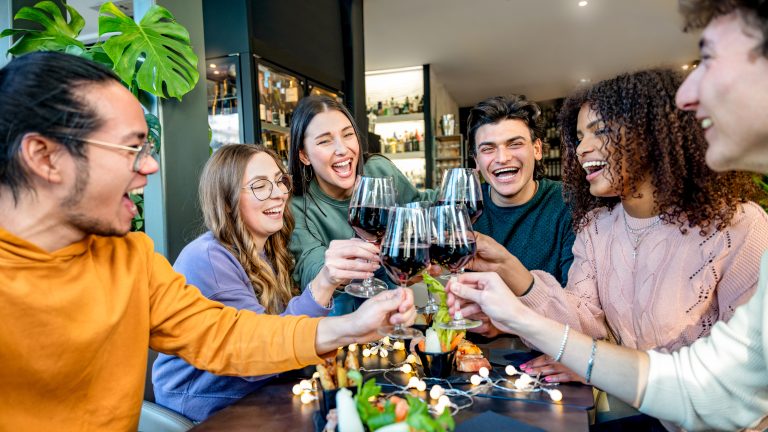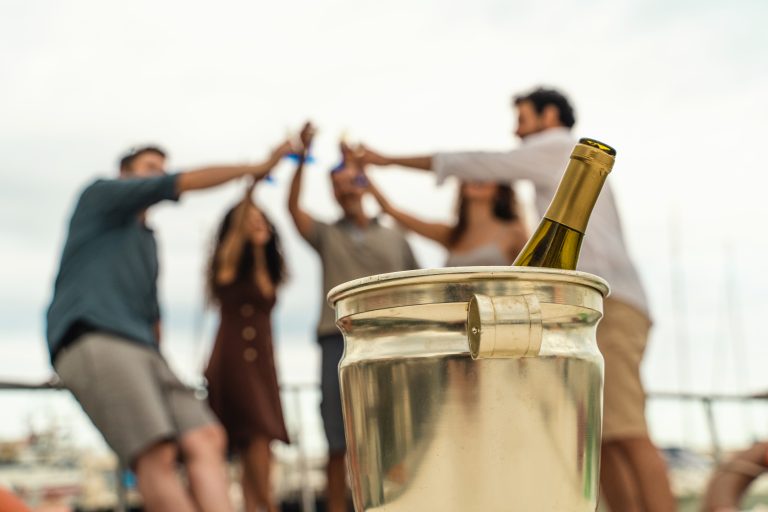Generation Z and the Myth of Moderation
For a long time, it was said that Generation Z is the cohort turning its back on alcohol, more concerned with health and balance than with glasses raised at social gatherings. Recent data, however, contradicts this myth. According to the global Bevtrac survey by IWSR, conducted in 15 international markets, nearly 73% of legal-drinking-age Gen Z reported consuming alcohol in the past six months – a clear jump from 66% in 2023.
The increase is particularly visible in the US, the UK and Australia, but the trend appears to be widespread: young people are not abandoning alcohol, they are simply consuming it differently than previous generations. We have summarized here, as a starting point for future discussions, some of the data currently available.
What Attracts Young People to Alcohol – and Where Wine Fits In
The behavior of young people is increasingly aligning with that of earlier generations, but with some distinct traits. Gen Z consumes a wider range of beverages: on average, more than five categories in the past six months, compared to just four among Boomers. This openness signals greater curiosity, but also less loyalty to a single category.
Spirits seem to have the upper hand: Generation Z is slightly more likely to consume them than adults overall. Moreover, almost half of Gen Z drinkers say their last drinking occasion took place in a bar, restaurant or club, compared to just one-third of the adult population. Drinking happens predominantly in social, urban spaces, perceived as more attractive than the solemn rituals of drinking at home.
For wine, this is a double-edged signal. On the one hand, there is an opportunity to be discovered as part of a social and cultural experience. On the other hand, the competition with cocktails and ready-to-drink beverages is stronger than ever.

Why Wine Is Hard to Choose
If wine fascinates through its diversity, it can just as easily intimidate through its complexity. Shelves packed with labels that are difficult to read, sophisticated names, and technical jargon (“melted tannins,” “maraschino cherry notes”) become real barriers for a young consumer. Many admit they feel overwhelmed and prefer simpler choices such as beer or cocktails, where the risk of “getting it wrong” is lower.
The numbers confirm this tension. In Romania, according to a Reveal study, 39% of consumers drink wine at least once a week, 29% drink one to three times per month, and 21% only occasionally. Red wine remains the most popular, followed by white and rosé. Still, young people remain more hesitant, and their frequency of consumption is below the national average.
What They Don’t Like About the Way Wine Is Presented
More than the product itself, it is the way wine is communicated that bothers them. The often overly serious tone turns wine into a lesson in oenology rather than a relaxed experience. The sense of exclusivity – the idea that good wine is only for connoisseurs – makes many feel pushed away from this world. And the descriptions rarely connect with their cultural universe: music, festivals, urban experiences.
What’s more, beer and ready-to-drink categories do not ostracize their cheaper products. In the world of wine (and sometimes spirits), entry-level bottles are often met with disdain from “connoisseurs.” For young consumers – who typically purchase with budget in mind – this again reinforces the feeling of exclusion.
How Wine Can Connect with Young People
To win over this generation, the wine industry needs to let go of solemnity and embrace authenticity. The language can be simplified without losing depth. Instead of saying “vibrant acidity,” we might say “a fresh wine, perfect for a summer evening on the terrace.”
Education can happen through experiences – interactive tastings, urban wine bars, creative social media campaigns. Cultural relevance is key: wine appearing at festivals, brunches, contemporary art exhibitions. And, just as importantly, diversity: wines for all tastes and budgets, from playful rosés to urban sparkling wines.

Romania – Tradition and Opportunity
In Romania, wine is part of the national identity. The country has a diverse terroir and authentic stories, but for younger generations these need to be “translated” into their language: visual, direct, relaxed.
The initiatives already exist – wine festivals, trendy wine bars, modern labels – but they need to be supported and amplified in order to make wine a natural choice for a generation that seeks variety and meaning.

Conclusion
Generation Z is not rejecting wine; rather, they view it with a mix of fascination and hesitation. They like authenticity but dislike rigid language. They are drawn to diversity, but intimidated by complexity. If Romanian wine succeeds in telling its story in a way they can relate to, and finds its place in their social spaces, it has the chance to become more than a drink: it can be a symbol of a generation in search of experiences, variety, and authenticity.







